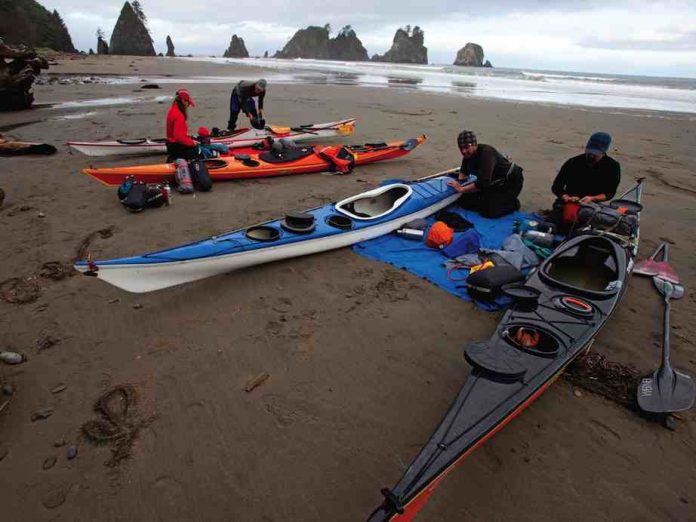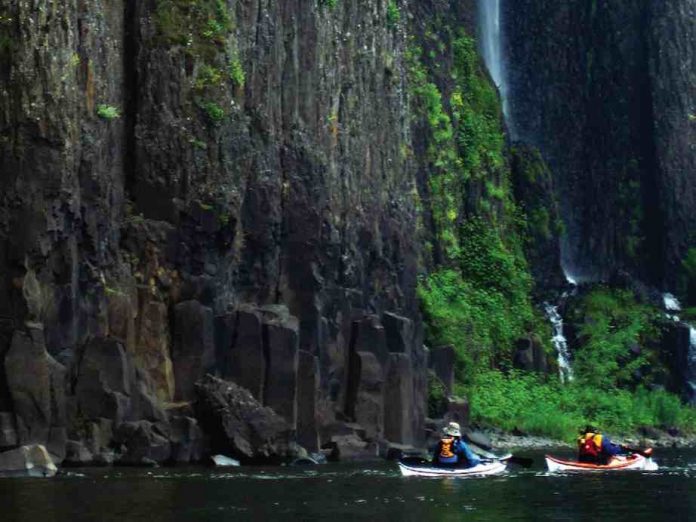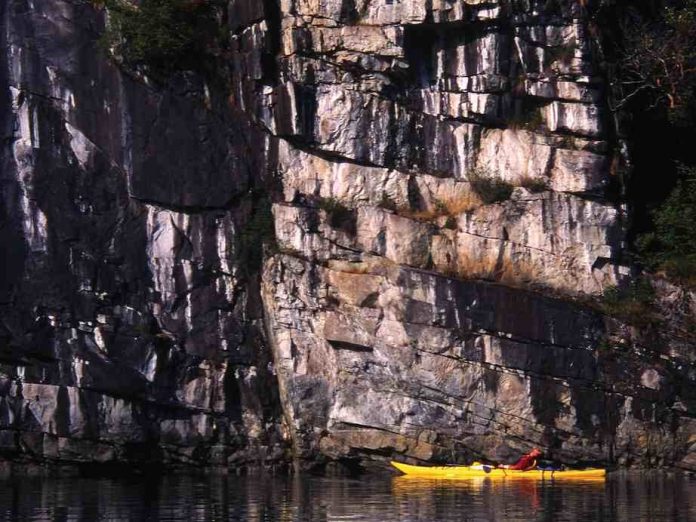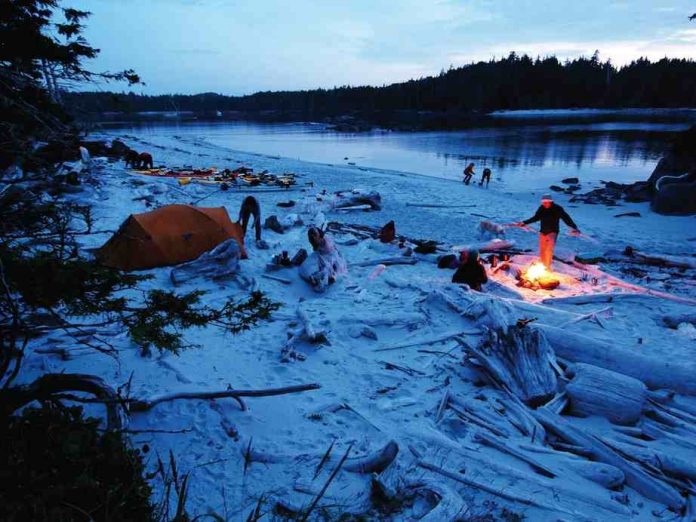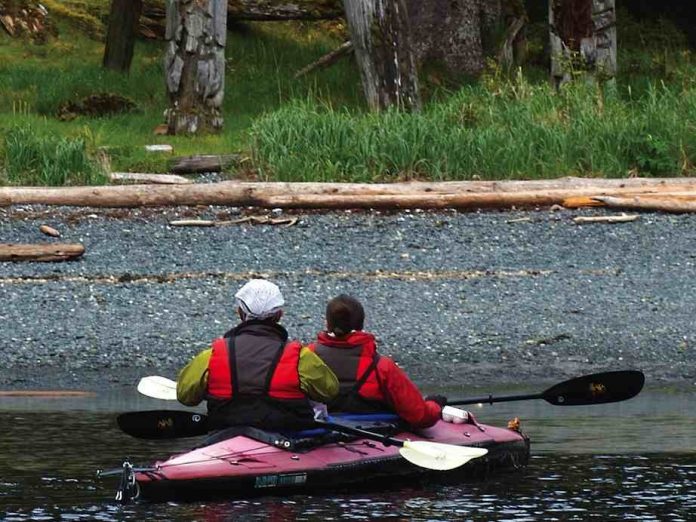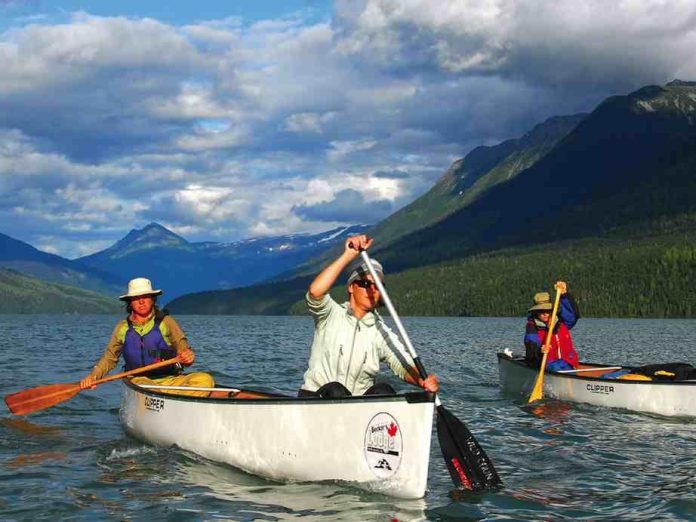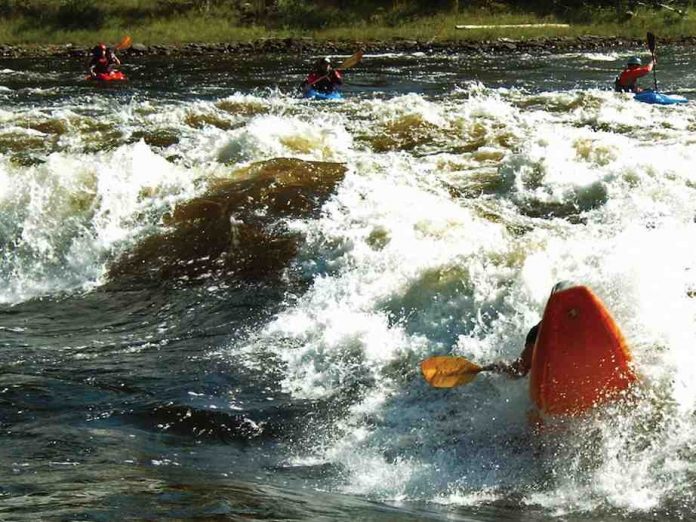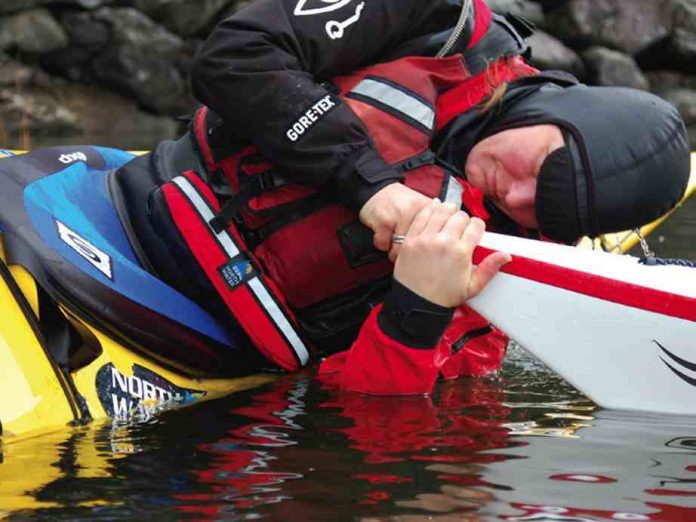I was conceived in a tarpaper shack. It had a door handle of silver-polished driftwood scavenged from the neighboring beach, and a chicken wire window through which carried the sound of waves gently lapping or violently thrashing three-billion-year-old volcanic greenstone.
My parents never set foot in this rustic hut. I’m not referring to the conception of the large-lunged, platinum-haired infant they named Virginia and raised in a semi-rural colonial. Rather, it is my adult identity—a sea kayaker by passion and trade—that was born here.
Few people can pinpoint the protozoan moment they became the essence of who they really are. Identify the choices that defined the course the rest of their lives would take. I can.
For me, it was during one of those golden, bewitchingly long summer days just after solstice on Lake Superior, when shadows seem to stretch to the horizon and the lumpy hills turn softly purple.
I arrived on the lake eager and impressionable, a week out of college and sopping-wet-behind-the-ears—even more so after a first day initiation in the surf.
I had an extra large mesh duffle containing my worldly possessions, a Rubbermaid full of books and an invitation to work as an assistant kayak guide.
My Evolving Kayak Identity
For the next four months, I divided my time between the shack known to my co-workers as the Taudis des Souris (not without good reason, I soon discovered), my no-longer-new-smelling tent and the cockpit of a kayak. At season’s end, I was a sea kayaker.
Even more than the incredible tripping and surfing or adjective defying landscape, the other kayakers with whom I shared those blissfully isolated, uncomplicated months defined me. From them, I learned to be master of my craft, confident on open water and in avalanching waves. I discovered how to live simply and comfortably out of 130 liters of plastic for weeks at a stretch. I listened to remarkable stories that would eventually lead me to my own thrilling adventures. I fell in love and shared the shack with more than just mice.
Every raw experience further glazed the patina of my evolving identity. I couldn’t know the places kayaking would take me, but I was eager to discover. I’m still discovering. Settling in to helm this issue of Adventure Kayak, I’ve added another layer of identity: Sea kayak magazine editor.
Driftwood and paddles still decorate my home, but I’ve traded chicken wire acoustics and isolation for high-speed and a broad- reaching industry and community network. I look forward to the inspiring stories and people to which this job is an unrivalled portal. I’ve no doubt your tales will lead some fascinating places.
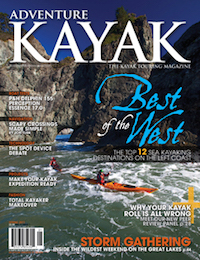 This article first appeared in the Spring 2011 issue of Adventure Kayak Magazine. For more great content, subscribe to Adventure Kayak’s print and digital editions here.
This article first appeared in the Spring 2011 issue of Adventure Kayak Magazine. For more great content, subscribe to Adventure Kayak’s print and digital editions here.



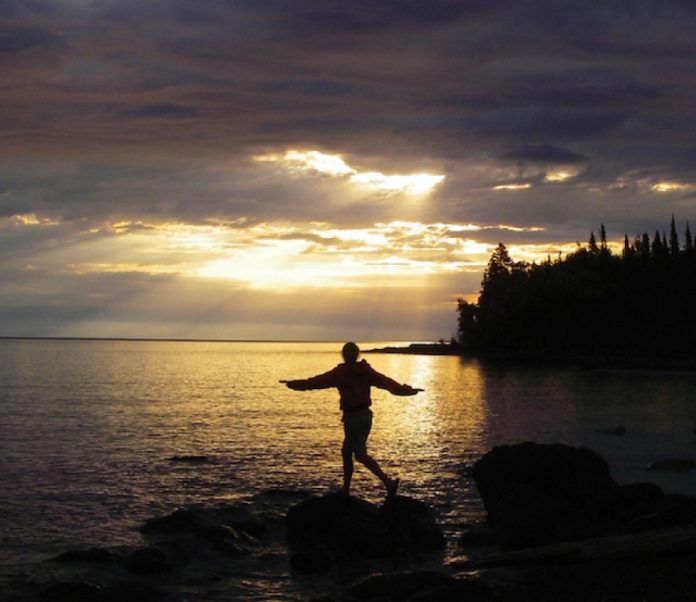
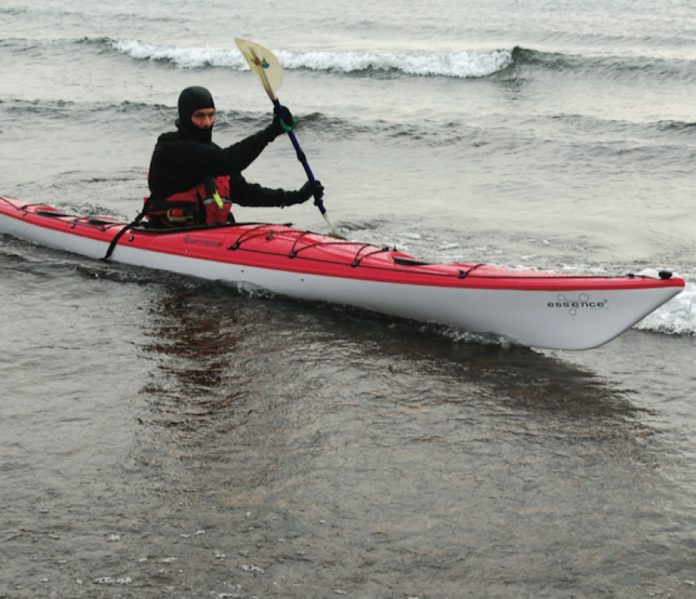
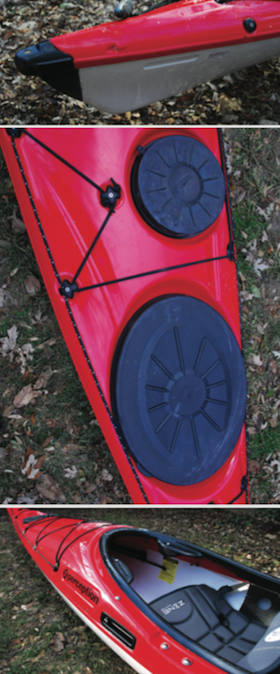 Rudder ready
Rudder ready